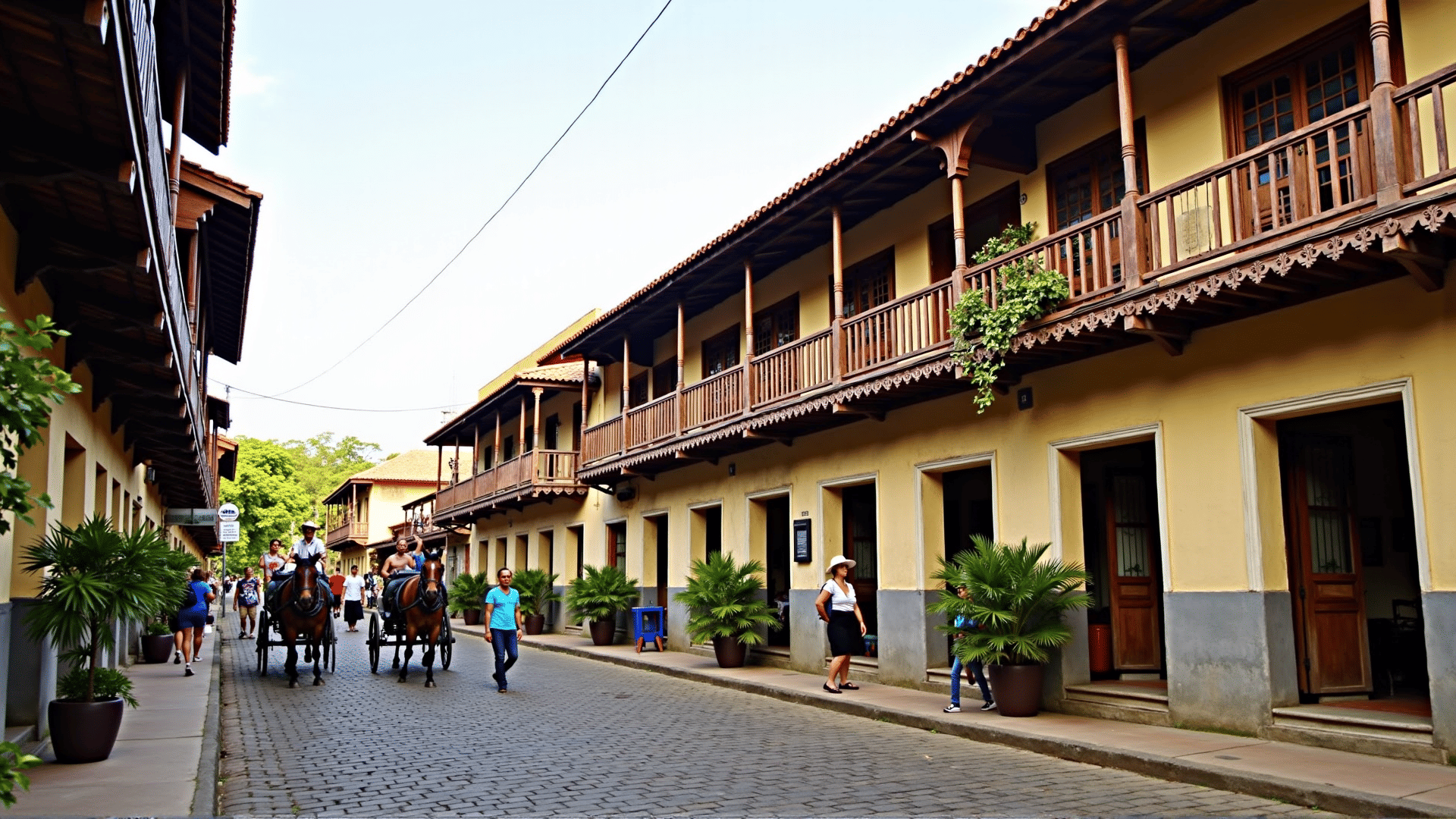Wandering through the streets of Vigan is like stepping into a vibrant canvas of history. This charming city in the Philippines offers a visual feast with its impeccably preserved colonial homes, each echoing tales from centuries past. As you meander along the cobblestone pathways, you'll find yourself enveloped in the distinctive blend of Filipino and Spanish architectural styles, a testament to the cultural fusion that shaped this UNESCO World Heritage Site.
Each house in Vigan stands as a sentinel of history, its wooden frameworks and red-tiled roofs reminiscent of a bygone era. The intricate wood carvings and capiz shell windows tell stories of artisanship and legacy. These houses, with their grand facades and elegant balconies, silently speak of the life that thrived within their walls.
The Calle Crisologo is the heartbeat of this historic district. As horse-drawn carriages, known locally as kalesa, amble along its length, the street transforms into a living museum. The rhythmic clip-clop of hooves against stone is a soothing soundtrack to your exploration. Local shops nestled in old edifices offer traditional crafts, ensuring that visitors can take a piece of Vigan's past home with them.
Visiting Vigan is more than just a visual journey; it is an experience that engages all senses. The air here carries the aroma of local cuisine, inviting visitors to taste the fusion of Spanish flavors and Filipino spices in dishes passed down through generations. The sound of laughter and chatter among locals and tourists alike fills the streets, adding to the vibrant atmosphere of this historic locale.
As the sun sets, casting golden hues on these storied facades, you find a deeper appreciation for Vigan's unique allure. The city lovingly preserves its past while embracing the present, creating an authentic and rich cultural mosaic. Exploring Vigan's heritage houses is not just about observing architecture; it's about experiencing a living history that continues to thrive amidst the modern world.
